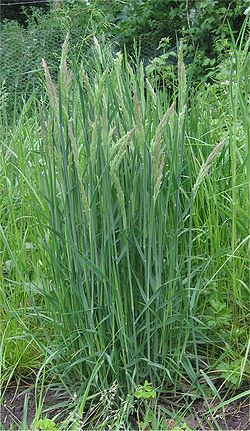| Holcus lanatus | |
|---|---|
 | |
| Scientific classification | |
| Kingdom: | Plantae |
| Clade: | Tracheophytes |
| Clade: | Angiosperms |
| Clade: | Monocots |
| Clade: | Commelinids |
| Order: | Poales |
| Family: | Poaceae |
| Subfamily: | Pooideae |
| Genus: | Holcus |
| Species: | H. lanatus |
| Binomial name | |
| Holcus lanatus | |
Holcus lanatus is a perennial flowering plant in the grass family Poaceae. The specific epithet lanatus is Latin for 'woolly' which describes the plant's hairy texture. Common names include Yorkshire fog, tufted grass, and meadow soft grass. In North America, where it is an invasive species, [1] names include velvet grass and common velvet grass. [2] [3]
Contents
- Characteristics and hybrids
- Invasive species and habitat preferences
- Noxious weed
- Invasive species
- Ecology
- See also
- References
In parts of northern Europe the grass is a common native species and a hardy pasture grass.[ not verified in body ]

